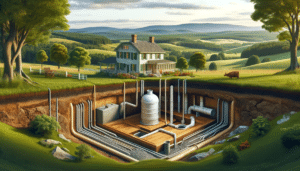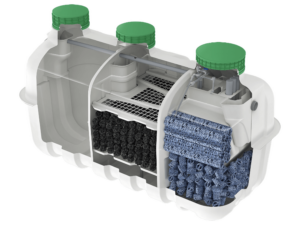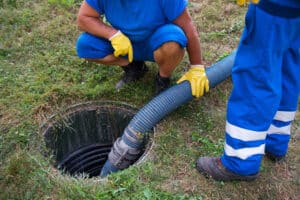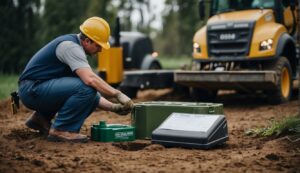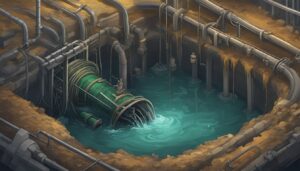Leach fields are an integral part of your home’s plumbing system. Septic tanks fill up with wastewater and solid waste, but the water needs to go somewhere rather than stay in the tank.
When water leaves the tank, it contains contaminants and impurities, and this is where the leach field begins the filtration process.
The field contains numerous trenches and perforated pipes, which are covered to prevent the wastewater from ruining your yard.
How Leach Fields Work
When a leach field is installed, trenches are dug to contain the piping systems, which can be buried a few feet into the ground.
The leach field pipes have tiny perforations in them, which allow water to be distributed along the entirety of the “field.” Unfiltered water will then begin to seep into the ground, where it is naturally filtered by the soil.
When you flush your home’s toilet, the following process occurs:
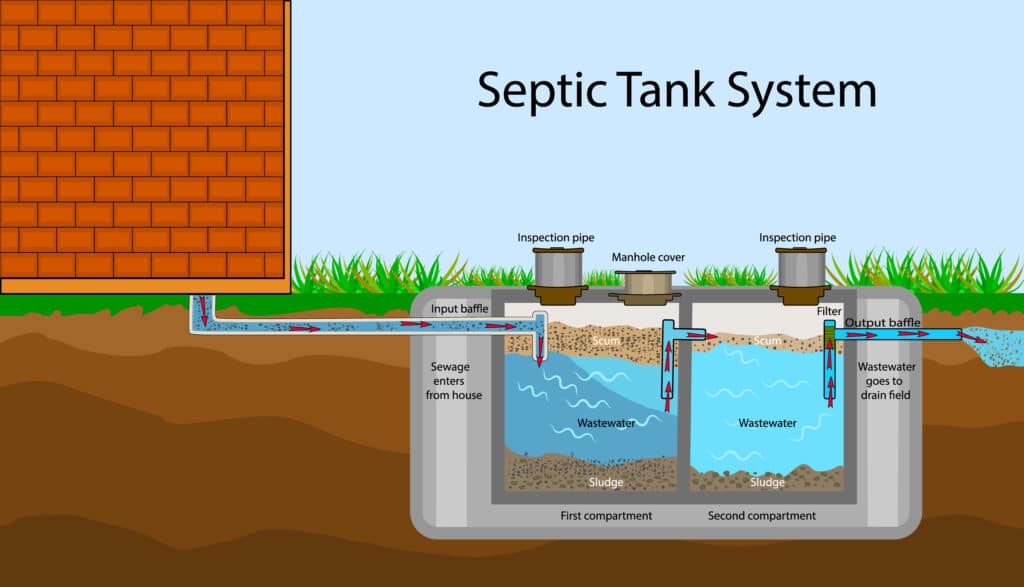
- Solid and liquid waste flow into the septic tank
- Solids fall to the bottom of the tank where they are broken down by bacterial processes
- Floatable solids like grease, oils, and fats will rise and float on top forming a scum layer
- The remaining liquid, or effluent, is directed into the leach field, where it’s allowed to drain back into the soil
- The soil naturally filters the water before it finally makes it’s way to the water table
The length of the pipes in your leach field depends on the type of soil you have and how well it drains.
In most cases, your leach field will last 25 years with good maintenance. However, there are times when you’ll need to locate your leach field and may even need to have the field replaced.
How to Locate Your Leach Field
In most cases, leach fields are located on open, flat areas of a property. Depending on how new your home or system is, your leach field may be marked with flags or other indicators.
Leach fields may have several trenches that are 18-36″ deep, up to 100’ long and 1’-3′ wide. Trenches are typically spaced six feet apart.
Signs That Your Leach Field is Failing
When a leach field is properly maintained, it can last decades without issues. However, when a leach field is failing, you will likely notice one or more of the following signs:
- Gurgling pipes
- Sewage odors from the septic tank, drains or leach field itself
- Plumbing backups or slow drains
- Issues with toilet flushing
- Mushy or wet grass over the leach field
The biggest concern with failing leach fields is bacterial mat growth. Routine maintenance and preventive measures can help prevent failure or repairs.
How to Maintain a Leach Field
There are several steps you can take as a homeowner to help keep your leach field working optimally.
- Avoid flushing anything other than waste or toilet paper down the toilet.
- Avoid pouring grease, paint or chemicals down the drain.
- Limit your laundry to just one load per day.
- Divert water runoff away from your leach field.
- Avoid placing heavy objects or parking vehicles on top of your leach field.
- Have your septic system pumped regularly (every 3-5 years).
- Have your system and leach field inspected annually.
If your leach field is failing or you have other issues with your septic tank, give us a call. Maintaining your septic tank and leach field will ensure that your home’s plumbing systems continue operating efficiently.
Current grant and rebate programs mean it may be possible to deal with the issue at little to no cost if you decide to upgrade to an advanced septic system at the same time!



